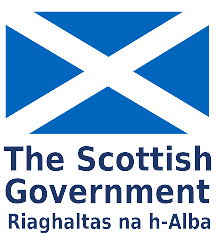In every society, women and men have distinct socially constructed roles and responsibilities, needs and knowledge, and experience and expertise, all of which must be understood and integrated as essential components of effective climate change action.
Climate change magnifies existing inequalities, and in particular, gender inequalities, but women and men together are vital to climate solutions. In recent years, global consensus has been reached that the integration of women’s rights and gender equality into the mitigation of and adaptation to climate change is not only essential but maximizes the efficacy of interventions, programs, and resources. This is coherent with the normative frameworks establishing the linkages between gender equality, women’s human rights, and environment, to which governments have already agreed, including the Convention on the Elimination of all Forms of Discrimination against Women (CEDAW), Sendai Framework for Disaster Risk Reduction, Rio+20, Agenda21, the Beijing Platform for Action, the 2030 Agenda for Sustainable Development and the Gender Action Plan (2018-2020). Gender equality is achieved when all human beings, are free to develop their personal abilities and make choices without the limitations set by stereotypes, rigid gender roles, or prejudices, and are treated as such.
Gender equality means that the different behaviors, aspirations, and needs of women and men are considered, valued, and favored equally. It does not mean that women and men have to become the same, but that their rights, responsibilities and opportunities will not depend on whether they are born male or female (GGCA Training Manual, 2009). Equality between women and men is seen both as a human rights issue and as a precondition for, and an indicator of, sustainable people-centred development. (OSAGI, 2001).
Box 1: Gender Gaps (Roots for the Future, 2015)
Pervasive gaps persist between women’s and men’s ability to realize the full spectrum of their rights, including in their access to and control over resources, in unpaid work burden, health and safety, and political voice, among other interconnected issues.
For example:
Women and girls experience extreme levels of poverty disproportionately to men and boys: Of more than 1 billion people living in the deepest levels of poverty, women are widely considered to be the majority (UNDP, 2014).
Vast differences exist between women’s and men’s land tenure: According to Food and Agriculture Organization (FAO) in 2011, globally less than 20% of all landholders are women, despite comprising nearly half of the agricultural workforce. The Social Institutions and Gender Index (SIGI) found that women had the same legal rights as men to own and access land in only 28 of the world’s countries.
While the total size of the global illiterate population is shrinking, the proportion of illiterate women has persisted: Women make up two-thirds (493 million) of the 774 million illiterate adults (15 years and older) in the world, and among youth, more than half—56 million of a total 100 million—are girls (UNICEF, 2019).
When women are paid for a job, they earn on average 10% to 30% less than men for work of equal value: The International Labour Organization (ILO) estimates that at the current rate of progress, it will take 75 years to make the principle of ‘equal pay for equal work’ a reality for women and men (ActionAid, 2015).
Women also have less access to labor markets, especially formal markets: In 2018, men in the employment-to-population ratio stood at 71.4%, while the ratio for women was 45.2% (ILO, 2018).
Women bear the burden of unpaid care work: “Women devote one to three hours more a day to housework than men; two to ten times the amount of time a day to care (for children, elderly, and the sick), and one to four hours less a day to market activities (World Bank, 2012). In the European Union, for example, 25% of women report care and other family and personal responsibilities as the reason for not being in the labor force, versus only 3% of men. This directly and negatively impacts women’s participation in the labor force.” (UN Women, 2015)
Decision-making spheres across all levels remain unbalanced: As of September 2018, only 24% of all parliamentarians are women, a small increase from 11.3% in 1995 (World Bank, 2018).
High-level decision-making on the environment is inequitable too: According to Inter-Parliamentary Union (IPU) 2014 data, women hold approximately 17% of the total ministerial positions worldwide, but in 2015, according to the Environment and Gender Index (EGI), women held only 12% of top ministerial positions in environment-related sectors (IUCN, 2015).




